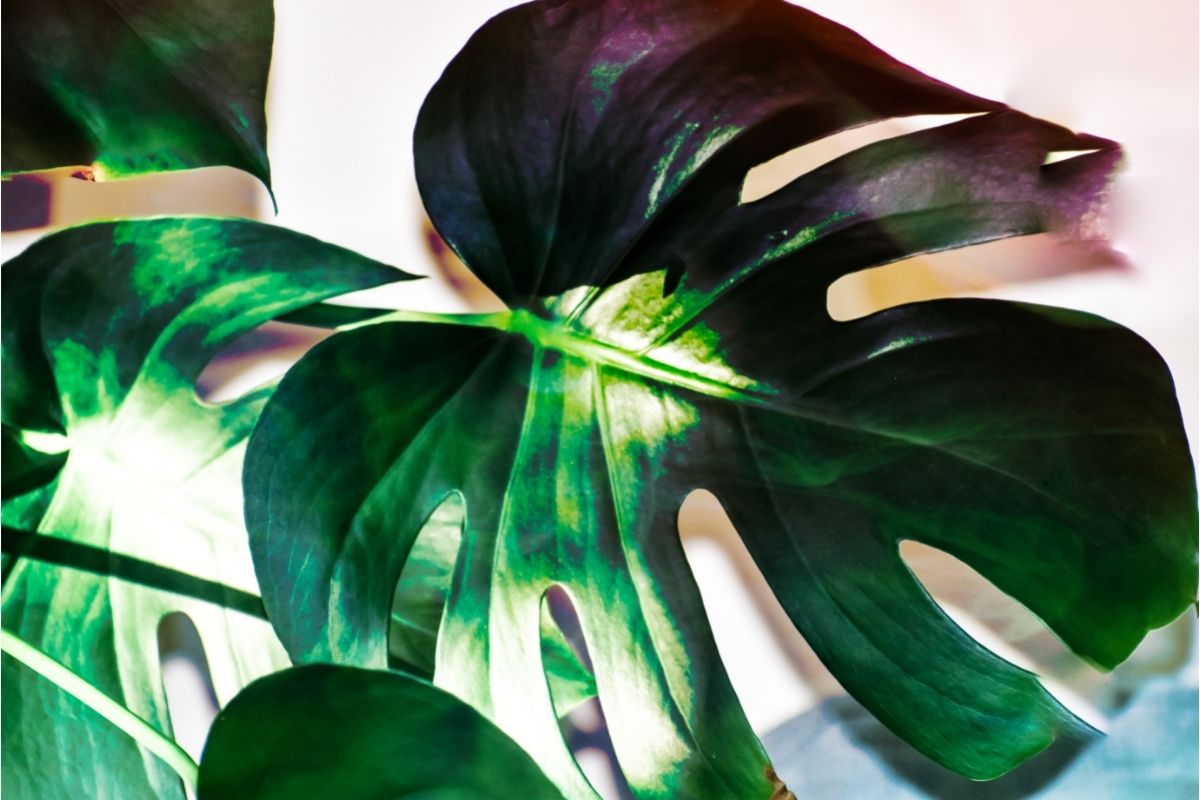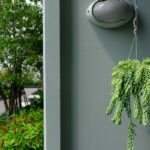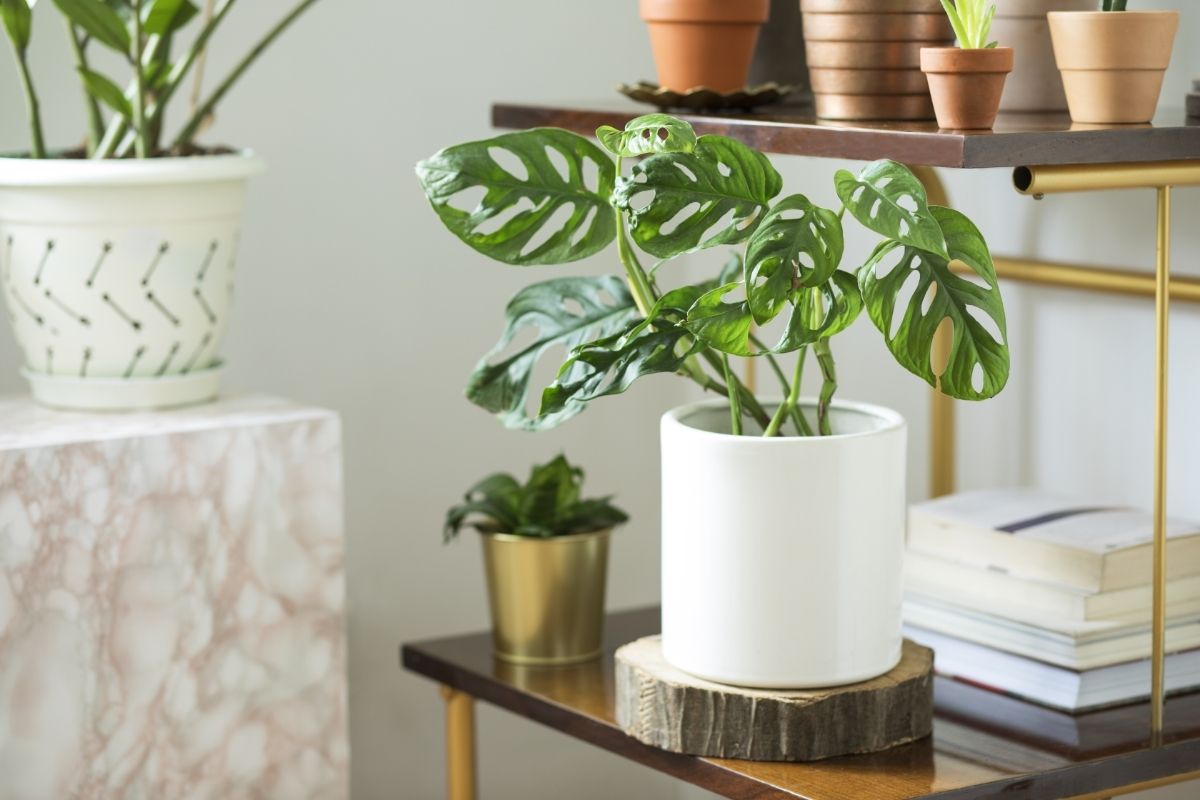Even if you don’t consider yourself a plant connoisseur, you’ve probably heard of the monstera.
The monstera, sometimes known as the ‘swiss cheese’ plant, comes from tropical forests in Southern Mexico and Central America, where the humidity levels are predominantly higher than here inside our homes.

The monstera houseplant is popular all over the world, and it’s favored for being low-maintenance and easy to manage. In the home of any plant lover, you’ll probably find a monstera taking pride of place at the center.
Because of the origins of the monstera, you may assume they’re naturally inclined to love heat and humidity. But is this true? If you’re looking to learn more about the monstera, stick with us to discover more about its humidity preferences, growing conditions, and more.
What Is The Monstera?
Let’s start with the basics.
The monstera is a species of tropical evergreen shrubs and vines native to Central America. Monsteras are unique houseplants, famous for their graphic, aesthetic leaves, which are a real statement piece.
When it lives indoors, the monstera plant has a fairly moderate growth rate, and it can reach average heights of one to two feet a year. There are around 45 species of flowering plants in the Arum family, which are native to the tropical regions of America.
Do Monsteras Like Humidity?
Monsteras come from a naturally warm and humid climate. Unsurprisingly, the monstera loves humidity. It thrives in humid environments, with an ideal humidity level of between 40% and 60%.
This isn’t always possible though, so it’s best to test the humidity level of your environment before introducing a monstera into your home.
The monstera doesn’t just love humidity, it’s necessary for its growth. Any plant that has changed climates, or has been introduced into the home, will need you to mimic the natural humidity and conditions of its native environment.
Ensuring your monstera is watered adequately will also ensure it undergoes photosynthesis correctly.
If your monstera doesn’t receive enough humidity and water, the plant’s stomata will close. This can cause carbon dioxide to become blocked, and photosynthesis will become interrupted.
The monstera plant has large leaves and will require a much more generous amount of watering to grow adequately.
How Much Humidity Does The Monstera Need?
Although a humidity level of between 40% to 60% is ideal for the monstera, it can survive with less.
Test Humidity In The Home
If you want to ensure you’re providing the monstera with enough humidity, you can test your home’s humidity level. One of the best ways to do this is to head to your nearest hardware store and purchase a hygrometer.
Hygrometers are instruments used to measure the amount of water present in the soil, vapor, air, or confined spaces. For your monstera to thrive, your humidity level should ideally sit at 50%.
Remember: your monstera can still grow well in low humidity. If your home is naturally low in humidity, you can do a few things to increase it. For example, if your monstera doesn’t get enough humidity, it’s more likely to wilt and get crispier, darker leaves.
Here are a few ways you can provide your monstera with more humidity.
Use A Humidifier
If your humidity is low, we recommend getting a humidifier. Humidifiers naturally release vapor and steam to increase the moisture levels in your air, which will benefit your monstera — considering that most monstera run at about 80-90% humidity in the wild, this will increase its growth rate and condition significantly.
Mist Regularly

You should also be misting your monstera regularly. If you’ve ever researched caring for monstera plants before, you’ll know that regular misting is one of the most common and effective tips.
The monstera will benefit from regular misting, and you can even place it next to other plants to increase the humidity of the air around them naturally.
Keep Doors Closed
Another thing you can do is to keep your doors closed. If you’re only using a small humidifier, or you’re relying on non-humidifying methods, this will be especially beneficial.
Ideally, you’ll want to keep your plants in the warmest and smallest room of your home. Keeping the door closed will preserve any humidity inside and keep it as concentrated as possible.
Cook Or Boil The Kettle More
This might seem like an unusual tip but stick with us.
Cooking or boiling your kettle more regularly (or even avoiding using the extractor fan as much) will generate more humidity, which your monstera will SERIOUSLY thank you for. If you have space for the monstera in your kitchen, this would be ideal.
Just remember not to place it directly next to your kettle or cooker to prevent it from overheating too much.
Keep Your Dishwasher Door Open
Here’s another unusual tip for you: if you’ve found a place for your monstera in your kitchen, you can also increase humidity by leaving your dishwasher door open.
Use A Pebble Tray
If you haven’t considered them yet, we recommend using a pebble tray. You can even make your own one at home. Get yourself a shallow bowl, fill it with a layer of pebbles, and top it off with water.
When it’s ready, place the monstera on top, and watch it thrive. Pebble trays can increase humidity by around 5%, and they’re most effective when used in already warm environments.
Final Thoughts
The monstera plant makes a beautiful addition to any home. Though it’s one of the easiest plants to care for, it can be sensitive to humidity. If you want your monstera to grow optimally, you’ll need to keep your home as humid as possible.
Thankfully, there are plenty of ways you can increase the humidity in your home naturally, even if you’re on a budget. You won’t have to go to the ends of the earth to look after your monstera.
The good news is that even if your home isn’t the warmest, you can still mimic the humidity levels needed for the plant to grow sufficiently.
- Best Hanging Plant For Low Light - September 4, 2023
- Best Indoor Plants Florida - August 28, 2023
- Best Plants For Bathroom Smells - August 21, 2023








